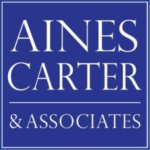Medicare’s Prescription Drug Coverage, commonly called Part D, is a crucial lifeline in managing prescription medication costs. This optional benefit is available to all Medicare beneficiaries, and even if you currently have no immediate need for prescription drugs, considering enrollment in a Medicare drug plan is a wise decision. Delaying enrollment without alternative credible prescription drug coverage or Extra Help may result in enduring late enrollment penalties for as long as you maintain your Medicare drug coverage.
Accessing Medicare prescription drug coverage requires enrollment in a plan approved by Medicare, tailored to provide this essential benefit. These plans come in various shapes and sizes, encompassing differing costs and medication coverage. Two primary avenues exist to secure Medicare prescription drug coverage:
Medicare Prescription Drug Plans (PDPs): Often referred to as PDPs, these plans supplement Original Medicare, specific Medicare Cost Plans, select Medicare Private Fee-for-Service plans, and Medicare Medical Savings Account plans. Eligibility mandates possession of Part A and Part B coverage to enroll in a Medicare Prescription Drug Plan.
Medicare Advantage Plans with Prescription Drug Coverage: Comprehensive plans like this bundle Part A, Part B, and prescription drug coverage (Part D) into a single package. Sometimes known as “MA-PDs,” they require Part A and Part B to join. It’s essential to note that not all Medicare Advantage Plans incorporate drug coverage.
Irrespective of the path chosen, residency within the Medicare drug plan service area is a prerequisite for enrollment.
If you currently receive health coverage through an employer or union plan, it is advisable to consult your benefits administrator before making any adjustments or seeking additional coverage. Joining alternative plans can potentially jeopardize your existing employer or union health and drug coverage, both for yourself and your dependents, making it challenging to regain such coverage.
Now, let’s delve into the timelines for enrollment, changes, and discontinuation of a Medicare drug plan:
Contents
Initial Enrollment Period
Your Initial Enrollment Period is the initial window of opportunity when you become eligible for Medicare, allowing you to enroll in a Medicare drug plan.
General Enrollment Period
If you enroll in Part B for the first time during the General Enrollment Period, you may sign up for a Medicare drug plan from April 1 through June 30. You coverage would then begin on July 1.
Annual Enrollment Period (AEP)
Each year, between October 15 and December 7, you have the flexibility to join, switch, or discontinue a Medicare drug plan. Changes resulting from this period take effect on January 1 of the subsequent year, provided your request reaches the plan before December 7.
Medicare Advantage Open Enrollment Period
If you are already enrolled in a Medicare Advantage Plan, you can adjust during the Medicare Advantage Open Enrollment Period, which spans from January 1 to March 31 annually.
Special Enrollment Periods
Special Enrollment Periods offer opportunities to modify your Medicare drug coverage under specific circumstances. While maintaining enrollment throughout the year is usually required, specific life events may qualify you for a mid-year change. For precise details on Special Enrollment Period eligibility, consult your plan provider.




Leave A Comment